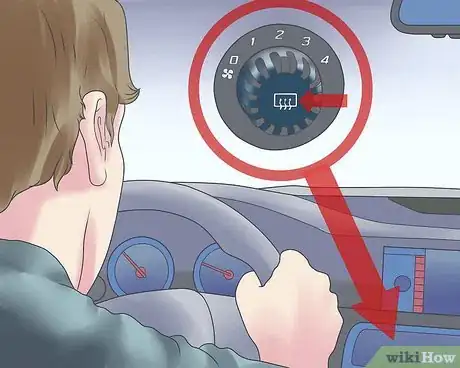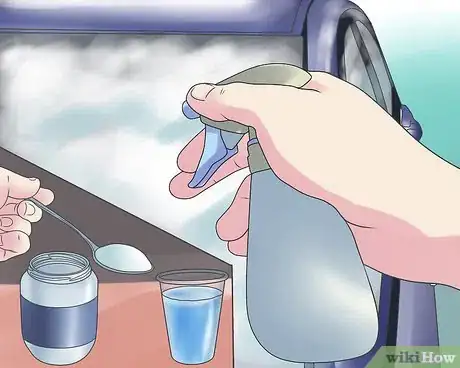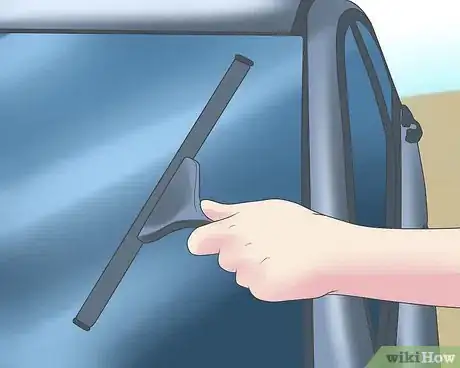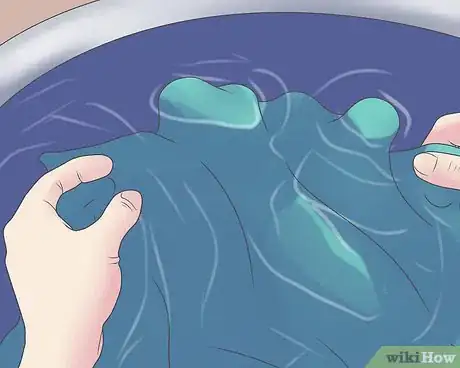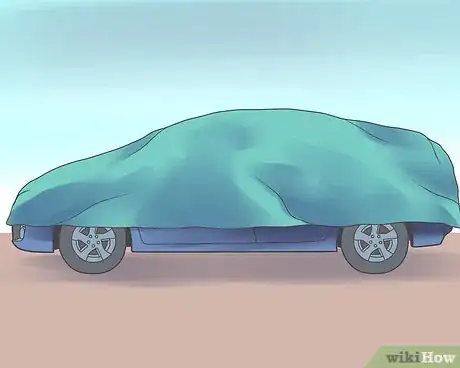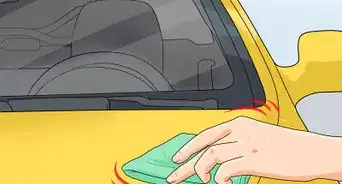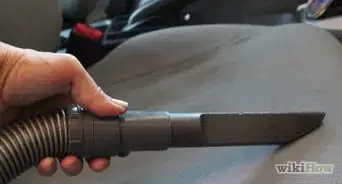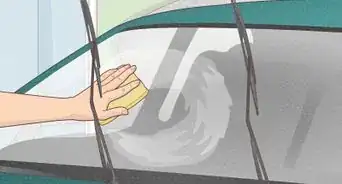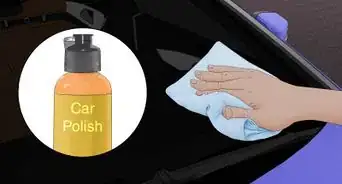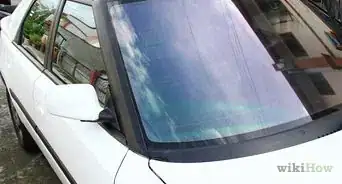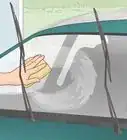This article was co-authored by Chad Zani. Chad Zani is the Director of Franchising at Detail Garage, an automotive detailing company with locations around the U.S. and Sweden. Chad is based in the Los Angeles, California area and uses his passion for auto detailing to teach others how to do so as he grows his company nationwide.
wikiHow marks an article as reader-approved once it receives enough positive feedback. In this case, 100% of readers who voted found the article helpful, earning it our reader-approved status.
This article has been viewed 1,006,030 times.
If you cannot see out your windshield, it is not safe to drive. In fact, in the UK; by law you must be able to see out your windows, and have your number plate clearly visible and legible. Always remove snow and ice from your car's windshield, greatly increasing visibility and improving the safety of you and any passengers. If you live in an area with terrible winter weather, there are even steps you can take to prevent ice buildup.
Steps
Removing Ice
-
1Start your car and let it idle warm the car up. If your car has a "defrost" setting on the temperature gauge, put it on. Wait at least fifteen minutes for the glass to warm up.
- Never attempt to try to defrost the windshield using water, hot, cold, or warm. Using warm or hot water can cause the glass to break due to thermal shock due to temperature change. In very cold climates, cold water can also freeze on the windshield, making your troubles even worse.
- While your car is warming up, make sure no ice, snow, or other materials are blocking the vehicle tailpipe. Remove any blockage to prevent the possibility of carbon monoxide poisoning.
- If you drive in a very snowy area, wait until the ice has noticeably begun to melt before proceeding to the next step. It may take thicker ice well over fifteen minutes to sufficiently begin melting.
-
2Spray your car with a saltwater solution. This will dissolve the ice via chemical reaction rather than melting it with heat. The ions in salt also lower the freezing point of water, making it difficult for water to refreeze. Apply the saltwater sparingly to your windshield since heavy salt exposure may cause damage to the glass.[1]
- While normal table salt will suffice in above freezing temperatures, you may want to consider using road salt, which is commonly shoveled onto pavements to quickly melt ice and reduce the risk of someone slipping and falling. Road salt has a different chemical composition that makes it more effective at freezing temperatures.
Advertisement -
3Apply an alcohol and water solution to melt the ice. Make a 2:1 rubbing alcohol to water solution and fill a spray bottle with it. Spray the solution onto all desired windows.
- You can also add a few drops of dish soap to the solution.[2] Adding chemicals is similar to adding salt and lowers the freezing point of water. This will melt the ice more quickly than warm water.
- Unlike the saltwater solution, the alcohol solution can be sprayed liberally without risking damage to your car.
-
4Buy a commercial de-icer if the homemade solutions fail. Most commercial formulas work well but tend to be costly. Like scrapers, these formulas shouldn't be hard to find at your local car supply store. Almost every auto store has a section dedicated to de-icers.
- Examples of popular de-icing agents include: "Valvoline Deicer" and "Prestone Spray-on Windshield De-icer."
-
5Use a squeegee, soft-bristled brush, or your windshield wipers to scrub away the residue. Once you have applied your chosen solution, wipe away the liquid and ice from your windshield and car.
- After a minute or two, your saltwater or alcohol solution should begin to melt the ice. Keep in mind, however, that the ice will only be partially melted. It will need to be brushed away in order to improve visibility.[3]
-
6Keep an ice scraper in the car all winter to chip ice off your windshield. You should purchase one for your car well in advance, then leave it in the boot or glovebox to handle ice if you have no other supplies around. Push it into the windshield and use short, powerful strokes to chip the ice away.
- Ice scrapers are specialized tools for scraping ice from your windshield. Typically, they are plastic and have a large, flat, dull blade on one end, and a handle on the other, sometimes combined with a brush. They can be purchased up at most auto stores and car supply stores. In cold climates, these will also be available in most large retail stores, hardware stores, gas stations, even grocery stores.
- In a pinch you can use a standard squeegee to scrape ice, although this is not as effective. Scraper heads are made from plastic rather than rubber, and this makes them more sturdy when scrubbing away residue.
Taking Proactive Measures
-
1Cover your windshield with a tarp, towel, or sheet, and weigh it down to prevent ice from building up. Only use this method in areas with light snowfall, as it can be a heavy blanket to remove when weighed down with snow.[4]
- Soak the towel in a saltwater solution and lay it on your windshield overnight for even better protection. Dissolve a tablespoon of salt in one quart of water and immerse the towel in the solution. While it is still damp, position the towel onto your windshield and place your wipers over it to hold it securely.[5]
- Your towel can be reused multiple times. Simply store it in a plastic bag after each use and add a small amount of water to keep it damp.
-
2Spray either homemade or commercial ice-prevention spray on your windshield at night. You can buy professional products or mix three cups of vinegar with one cup of water for your own spray. Spray a light coat of a vinegar/water solution on your defrosted windows before bed to prevent ice the next morning.
- Be very careful not to apply heavy coatings of vinegar to your car, because it may eat into the windshield, creating miniature pockmarks in the glass. Applying vinegar to metal can also speed oxidation and result in rust or corrosion.
-
3Pour some rubbing alcohol into your windshield washer reservoir. This will help the wiper lines from freezing up and not working.
- This trick will save you from having to go to the store to purchase proper windshield fluid. Remember, preventing and fighting ice build-up doesn't have to be a costly endeavor.[6]
-
4Cover your car with a tarp whenever you aren't driving. Make sure to tie it down with bungee cables or some other fastenings to prevent it from slipping or being blown off.
- Parking your car in the garage is best. By protecting your car from even being exposed to the elements, you significantly reduce the amount of labor required to remove ice after the fact.
- Though this prevents most ice build-up, you may notice some light frost on your windshield. However, this minor ice accumulation should melt shortly using your car's defrost function.
Expert Q&A
-
QuestionHow can I prevent ice and snow from sticking to my windshield?
 Chad ZaniChad Zani is the Director of Franchising at Detail Garage, an automotive detailing company with locations around the U.S. and Sweden. Chad is based in the Los Angeles, California area and uses his passion for auto detailing to teach others how to do so as he grows his company nationwide.
Chad ZaniChad Zani is the Director of Franchising at Detail Garage, an automotive detailing company with locations around the U.S. and Sweden. Chad is based in the Los Angeles, California area and uses his passion for auto detailing to teach others how to do so as he grows his company nationwide.
Auto Detailing Expert If you put a sealant on your windshield, specifically a product with a ceramic coating, frost and snow won't stick as hard.
If you put a sealant on your windshield, specifically a product with a ceramic coating, frost and snow won't stick as hard. -
QuestionWhat can I apply to the door frames of today's cars so that they do not freeze up during the winter? Will WD40 or rubbing alcohol work, or should I use another product?
 Community AnswerSilicone spray will keep the weatherstripping from freezing. Spray some on a rag and wipe it on your weatherstripping and frame.
Community AnswerSilicone spray will keep the weatherstripping from freezing. Spray some on a rag and wipe it on your weatherstripping and frame. -
QuestionWill it cause damage to the wipers if I use the alcohol solution on the windshield?
 Community AnswerIt depends on the type of wipers - old style rubber/latex wipers may be affected just as ethanol in fuel can gradually melt the seals in some old engines. Many newer wipers are latex free/nitrile.
Community AnswerIt depends on the type of wipers - old style rubber/latex wipers may be affected just as ethanol in fuel can gradually melt the seals in some old engines. Many newer wipers are latex free/nitrile.
Warnings
- Don't be impatient and drive off without having all snow and ice removed from your vehicle's windshield and other windows--you are putting yourself and other drivers at risk.⧼thumbs_response⧽
- If you find yourself on the road and unprepared in the middle of an ice/sleet storm, stop at the nearest store that carries WD-40 (WD-40 is found nearly everywhere, even grocery and dollar stores). A good spray of the product on the windshield will melt accumulated ice (do not use the tiny red directional-spray straw). When the glass is clean, spray again for preventative coating.⧼thumbs_response⧽
References
- ↑ http://science.howstuffworks.com/nature/climate-weather/atmospheric/road-salt.htm
- ↑ http://www.sheknows.com/living/articles/1021085/tricks-to-defrost-your-windshield-in-a-hurry
- ↑ http://www.sheknows.com/living/articles/1021085/tricks-to-defrost-your-windshield-in-a-hurry
- ↑ https://www.accuweather.com/en/weather-news/top-hacks-to-deice-your-vehicle-during-winters-icy-grip/433965
- ↑ https://www.accuweather.com/en/weather-news/top-hacks-to-deice-your-vehicle-during-winters-icy-grip/433965
- ↑ https://www.bobvila.com/articles/homemade-de-icer/
About This Article
To de-ice your windshield, start your car and let it idle for 15 minutes to warm it up. If your car has a "defrost" setting on the temperature gauge, turn that on to speed things along. If you need to de-ice your windshield even faster, try using a homemade saltwater or alcohol solution, or purchase a commercial de-icing product. Apply the solution of your choice, then use a squeegee or your windshield wipers to scrub away the residue and remove the ice! For tips on how to prevent ice from building up on your windshield, read on!
